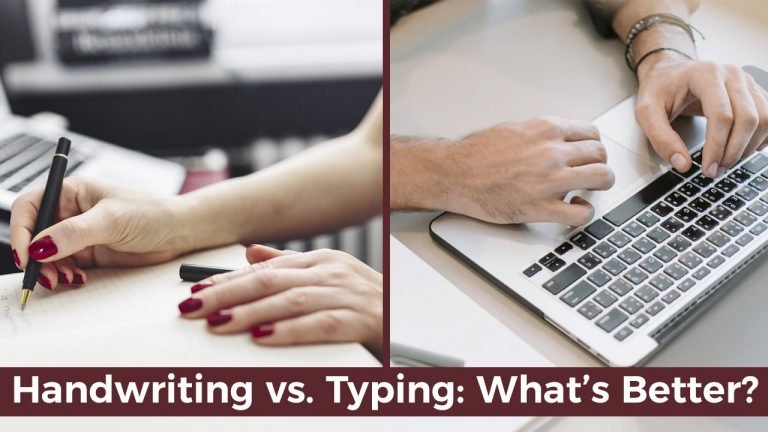
To echo the words of David Warlick, technology is a necessity for every classroom, student and teacher as not only does it inform development but also provides a better experience of the world.
When it comes to note taking, however, there is a heated debate over handwriting and typing. Although most schools and students are ditching penmanship for keyboard typing, it is essential that you weight the pros and cons before jumping on the bandwagon.
Here, we discuss the benefits of both methods and discuss how each plays a role in boosting cognitive ability. For a more relaxed time preparing huge essays, it is essential to contact a paper writer, therefore, sparing enough time for revision and focusing on other assignments.
Handwriting
Listen, Conceptualize, Summarize
While handwriting may not measure up to typing speeds, many studies deem it better for students as not only does it engage the brain more but also helps in conceptualization and memory.
Since you have to understand the content before summarizing, handwriting helps you focus more on a speaker and engage his concept deeper. As a result of this, you internalize and relate with facts better, therefore, making it easier to recall.
Also, handwriting engages the motor cortex of your brain in deciphering information and breaking it down to blocks that are easier to internalize. Due to the increased cortex activity, you maintain multiple cognitive processes, thus slowing down the decline of memory as you age.
Better Recalling Of Information
Owing to the amount of time required for one to engage with content during handwriting, you allow information to sink in, therefore making it easy to remember details when needed. By engaging both the hand and the brain in styling each letter, you give the brain ample time to familiarize with content, therefore, retaining more information.
Focus
When it comes to absorbing information, you have to muster all your concentration and channel it to the task at hand. Since handwriting requires you to concentrate to internalize and summarize content, you pay more attention to sessions amassing even more information.
With cursive writing, however, it is easy to be lost as you are not engaging the brain with conceptualization. This is because transcribing words verbatim can be done unconsciously.
Better Critical Thinking
As part of digesting and processing information, you think thoroughly on the material and understand basic principles. As a result, you can summarize and apply the concepts in solving related problems.
Typing
Convenience
With many concepts being tackled in subsequent lectures, addressing each concept through handwritten notes can wear you out. For typing, however, one can reach fast typing speeds and even type letters verbatim for later study.
However, it is vital to ensure that you revise your notes as lesser conceptualization is ripped from transcription. To faster type notes, it is critical to practice, therefore learning how to organize your work and increase the wordage per minute.
Additionally, if you aim to edit work after preparing it, handwriting may cost you a ton of papers and time. With typing, however, you can perform corrections efficiently without sacrificing entire pages of work.
Legibility
Truth be told, not everybody can shape every letter of the alphabet as is or observe adequate space between words. As such, it may prove impossible to share notes between groups. Even worse, many may lower the quality of their cursive writing when subjected to speed and as a result, bear notes that are hard to read.
With typing, however, all letters are well shaped, making them easy to read for everybody. Even better, typed work is more durable as compared to printed work that is susceptible to fading after a short duration of time.
Share-ability
With written notes, it is not only costly to make a copy but also risky as paper can be easily damaged. For digitally written content, however, one can electronically share without catering any expenses or ruining the original.
Eyestrain And Headaches
Looking at a screen for long durations of time is bound to stress your eyes and spark migraines. Although this may not yield permanent damage, it disorients the writer, therefore, lowering one’s productivity.
To curb eye strain, limit the amount of light on your monitor, and take breaks from the screen more often. Alternatively, you may invest in computer glasses as they help reduce the harsh effect of screen light on eyes.
While some may argue that the pen is mightier than the keyboard and vice versa, each has its fair share of challenges and merits. By learning when best to use each element, you can boost productivity and better grasp content.
For students that prefer typing; however, it is critical to revise notes, later on, thus giving yourself ample time to understand various concepts.
